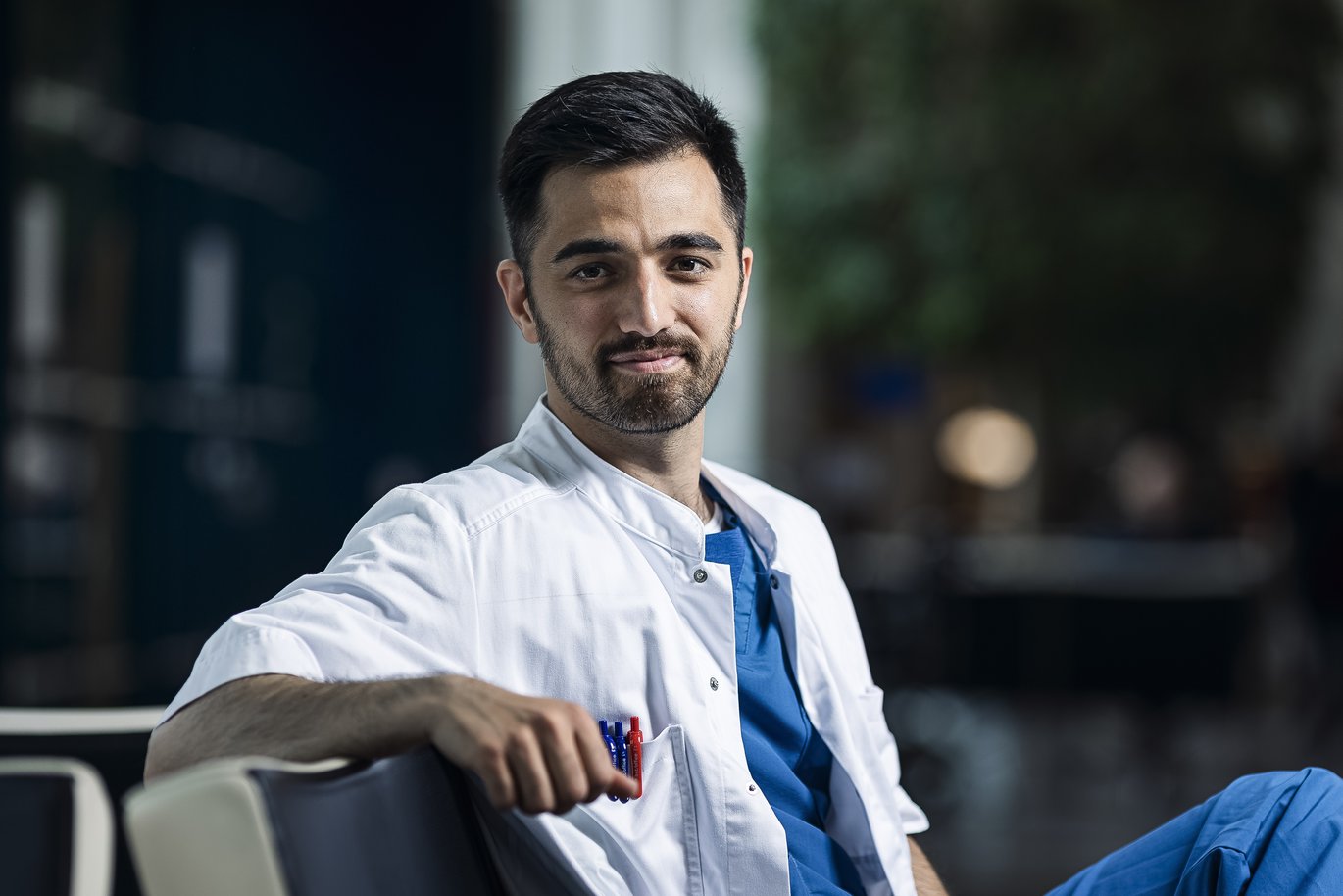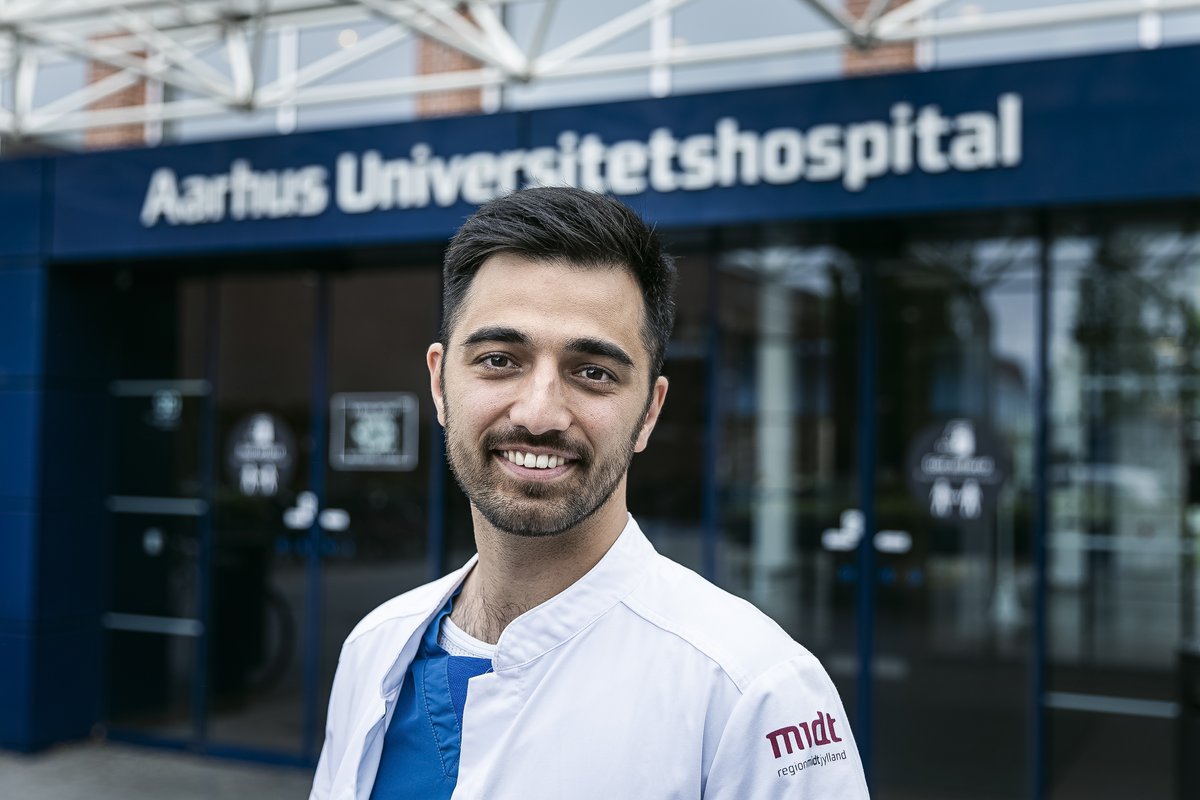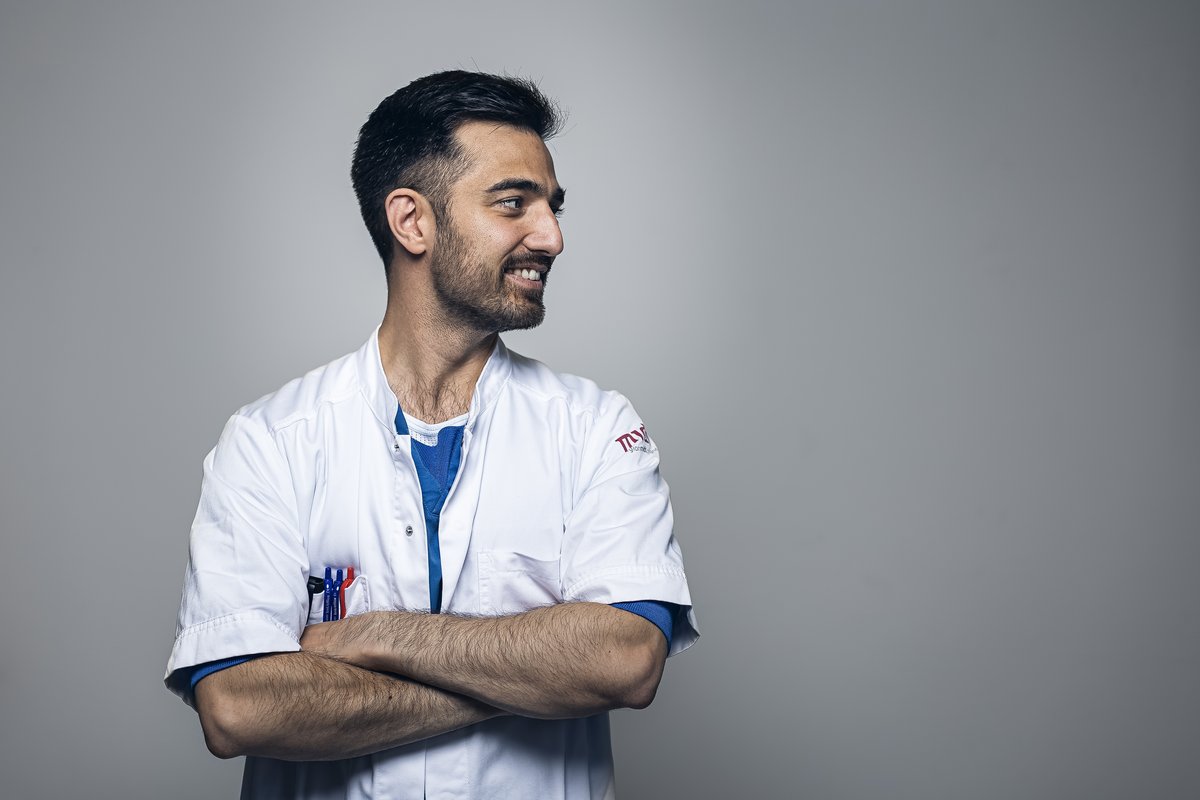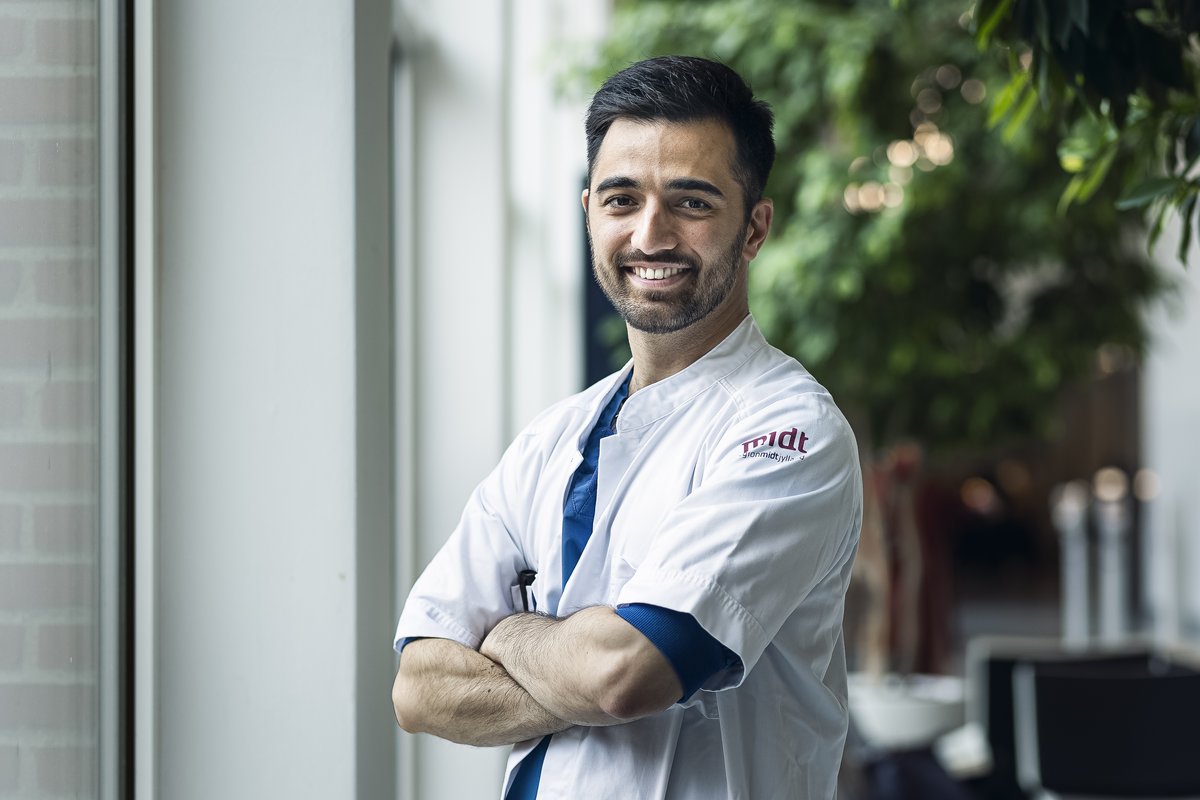”I can look inside your heart”
MDPhD student Omeed Neghabat is working to improve treatment of cardiac patients by looking inside their hearts – literally. He presented his research at the 3 Minute Thesis competition at AU in March, and has since been selected to compete in the finals in Italy against participants from 23 European universities.

Update 10 June 2022: Omeed Neghabat won first prize at the 3 Minute Thesis final at the University of Padua on Friday morning
”I can look inside your heart. Not metaphorically, I can actually physically look inside of your hearts”.
This is how PhD student Omeed Neghabat opened his presentation at this year’s 3 Minute Thesis (3MT) competition at AU, which took place in March. He stood in front of a stopwatch that started counting down from three minutes the moment he started talking. That’s how much time 3MT competitors have to present their research to the audience. In addition to a simple drawing of a heart with red coronary arteries and two photos of arteries: one healthy, one blocked.
Omeed Neghabat doesn’t have X-ray vision. He’s a PhD student at the Department of Clinical Medicine who’s working on treatments for some of the most common causes of death in the world: blood clots and coronary artery disease. Together with his research group, he’s investigating whether filming patients’ arteries from the inside with a camera as thin as a piece of spaghetti can make ballon angioplasty a more effective treatment.
Which is not, on the face of things, a subject that’s easy to boil down to three minutes. Which is why Omeed spent three weeks polishing his presentation and his delivery.
“I think the first sentence is the most important. I spent a long time getting that right. And aside from that, I think the point is to communicate in a way that’s simple without being oversimplified, because I don’t want to talk down to my audience,” he explained.
Omeed Neghabat and the other participants in 3MT from AU were given an opportunity to participate in a series of practical workshops to hone their communication technique.
“In addition to that, I practiced my presentation alone and in front of others MANY times until I felt like I’d nailed it.”
And nail it he did: Omeed Neghabat won the 3MT competition at AU in March. Since then, he’s gone on to qualify for the final – the first PhD student from AU to do so – which will take place in Padua, Italy on Friday 10 June. Here he’ll be competing against two other PhD students: Efty Ntemou from the University of Groningen in Holland and Ignacio Abadía Tercedor from the University of Granada i Spanien.
Research is “a grownup thing”
We met Omeed Neghabat about a week before he left for Italy. He welcomed us into a conference room near the coronary care unit at Aarhus University, which is where he’s conducting the research his PhD project is based on. He was in good spirits, and felt prepared for the final.
“I got my instructor from the workshop to give me tough feedback, all the way down to how I move my fingers. I’m not allowed to make any changes to the presentation itself, but I had a few seconds left over in my presentation, so I’ve worked on including more pauses and stuff, so I’ve finetuned details like that,” he said.
Omeed Neghabat is working on the final year of his PhD project, and will be submitting his dissertation in February 2023. That he started doing research at all was a bit of a coincidence.
“I’ve always thought of research as a grownup thing. But I got really sick of exams as an undergraduate medical student. I wasn’t fed up with the academic side of things, but I got tired of feeling that every time I got good at something, I had to start over on something new. One of my friends suggested that I do a research year, and I could join the group he was part of, so I decided to do that,” Omeed Neghabat explained.
“For the first year, I worked on the project full-time, and afterwards I kept up with my research in the group on the side while I studied, and afterwards I was offered a place in the group as a PhD student,” he said.
Testing new therapies
The research project Omeed Negahabat is involved in is directed by Evald Høj Christiansen, a clinical associate professor at the Department of Clinical Medicine. The group is exploring whether camera techniques can be used in the treatment of coronary artery disease to improve long-term patient outcomes.
“We insert our device into an artery in the wrist or groin and thread it through the artery all the way until we reach the heart,” explained Omeed Neghabat, as if it were the most natural thing in the world. He performs this operation himself, and has trained doctors at several European hospitals in the technique.
“Usually, treatment is based on X-rays – that is to say, looking at the heart from the outside. We scan the artery from the inside, which lets us see the structure of the artery, what’s healthy and where there’s pathology, in great detail. If there’s pathology, we can see whether it’s fat, calcium or some other material causing it. We can use this information to assess what size of balloon we need to use to expand the artery,” Omeed Neghabat explained.
The group is gathering data on 1,200 patients from all over Europe comparing the standard treatment with the new treatment based on the camera technique.
“We receive data from 40 clinics, and are following the patients’ progress in this way. My PhD project focusses specifically on following patients for two years after the operation, but the idea is to follow them for ten years,” Omeed Neghabat said.
The world is watching
The research group’s work is cutting edge, and their research is having international impact.
“It’s incredibly exciting, fun – and it’s also really daunting, because if you make a misstep, the whole world is watching. But that’s also really motivational, along with the fact that I can see that what we’re doing here and now has an effect for the patients. I feel that’s an incredible privilege.”
Research only becomes relevant when we can communicate it
Omeed Neghabat is already benefitting from the tools participating in 3MT has given him – both in his research and not least in his interactions with patients.
“That’s precisely one of the reasons I’m so focused on communication – because I believe that actually, research only starts to be relevant when we’re able to communicate it. We need to communicate to experts, foundations, the general public and patients. Over the course of my training, I’ve gotten really good at communicating with experts, but we don’t have as much focus on the people our research directly impacts. But I’ve become more aware of this through my participation in 3 Minute Thesis.”




